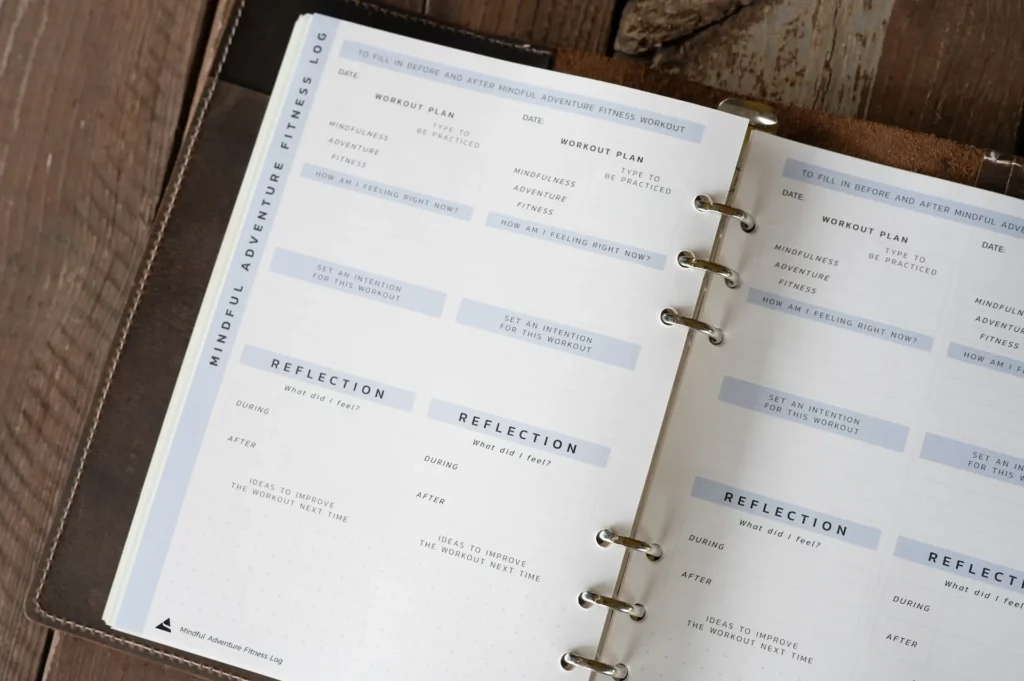How Journaling and Planning Increase Productivity
Are you feeling overwhelmed by the demands of your fast-paced life? Juggling multiple responsibilities and goals can leave you feeling scattered and unproductive. However, there’s a powerful solution at your disposal: journaling and planning. By incorporating these practices into your daily routine, you can significantly boost your productivity and achieve greater success. In this article, we’ll explore how journaling and planning work together to enhance productivity and provide practical strategies to implement these practices. Discover how journaling and planning can transform your productivity levels!
1. Clearing the Mental Clutter with a Daily Wellness Journal
Journaling offers a remarkable benefit – it clears the mental clutter that hinders productivity. Taking a few moments each day to write down your thoughts, ideas, and tasks externalizes them from your mind and creates space for focused work. With a wellness journal, jot down your to-do lists, goals, and priorities to gain a clear understanding of what needs to be done. This clarity helps you direct your attention and energy towards the most important tasks, avoiding the trap of busyness without productivity. By decluttering your mind through journaling, you free up mental space for creativity, problem-solving, and efficient decision-making.
2. Setting Goals and Prioritizing Tasks: The Best Journal for Mental Health
Effective planning is crucial for productivity. A guided journal offers an ideal platform for setting goals and tracking progress. Start by identifying your long-term goals and breaking them down into smaller, manageable tasks. When you write these goals and tasks in your wellness journal, you commit them to paper and establish a clear plan of action. This process not only provides structure but also increases accountability and motivation. Use your journal to prioritize tasks based on their importance and urgency. By allocating your time and attention to the most critical tasks, you can make significant progress towards your goals and achieve a sense of accomplishment.
3. Time Management and Focus with a Wellness Journal
Time management is fundamental to productivity, and planning helps you make the most of your time. Use your wellness journal to schedule your day or week, assigning dedicated time blocks for different tasks. Be realistic in your planning and allow buffer time for unexpected interruptions or delays. With a guided journal, you’ll be able to focus on one task at a time, avoid multitasking, and maximize your productivity.
4. Reflecting and Learning from Experience: Journaling for Mental Health
Journaling isn’t just about planning; it’s also a valuable tool for reflection and learning. Regularly review your journal entries to gain insights into your productivity patterns, strengths, and areas for improvement. Analyze your experiences – what worked well, and what obstacles did you encounter? By learning from your journaling experiences, you can identify strategies that have proven successful and make adjustments to overcome obstacles or inefficiencies. Consider using your journal to capture lessons learned and record any productivity hacks or strategies that have worked for you. This repository of knowledge becomes a valuable resource for continuous improvement and personal growth.
5. Enhancing Focus and Mindfulness with a Guided Journal
A guided journal can enhance your focus and mindfulness, both of which are critical for productivity. When you set aside time for journaling, you create a space for self-reflection and self-awareness. By practicing mindfulness during your journaling sessions, you cultivate a present-moment awareness that carries over into other aspects of your life. This increased mindfulness helps you stay focused on the task at hand, reduce distractions, and maintain a state of flow, leading to heightened productivity.
Implementing Journaling and Planning in Your Routine

Now that you understand the benefits of journaling and planning for productivity, let’s explore some practical strategies to incorporate these practices into your daily routine:
- Dedicate a specific time each day for journaling and planning. Whether it’s in the morning to set intentions for the day or in the evening to reflect on your accomplishments and plan for the next day, consistency is key.
- Find a journal or planner that suits your preferences and needs. Experiment with different formats, such as digital apps, bullet journals, or traditional notebooks, until you find the one that resonates with you. We recommend the Recal Guidebook.
- Keep your journal or planner with you throughout the day. Use it to capture new ideas, track progress, and make adjustments to your plans as needed.
- Use clear and specific language when recording tasks and goals. Break down larger goals into smaller, actionable steps and assign deadlines or timeframes for each task.
- Regularly review and update your journal or planner. Take time to assess your progress, evaluate your strategies, and make adjustments as necessary. Celebrate your achievements and learn from any setbacks or challenges.
By incorporating journaling and planning into your daily routine, you can unlock your productivity potential and achieve greater success in both your personal and professional life. Embrace these practices as powerful tools for organization, reflection, and growth, and watch as your productivity soars to new heights.

